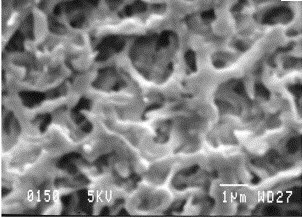Feb
27
A Real Ultra Capacitor Discovery
February 27, 2012 | 2 Comments
With EEStor out of sight and supposedly over, new research with very striking potential is coming. North Carolina State University researchers led by physicist Dr. Vivek Ranjan have discovered the means by which a polymer known as PVDF enables capacitors to store and release large amounts of energy quickly. Understanding leads to exploitation.
Ranjan previously found that capacitors, which contained the polymer polyvinylidene fluoride, or PVDF, in combination with another polymer called CTFE, were able to store up to seven times more energy than those currently in use.
Ranjan said, “We knew that this material makes an efficient capacitor, but wanted to understand the mechanism behind its storage capabilities.”
The findings should lead to much more powerful and efficient electric cars. Liquid fuels offer a stored energy per unit weight or volume that hasn’t been bettered by anything practical yet. That has slowed to a near stop the widespread adoption of electric vehicles. Vehicle dynamics require essentially two rates of energy flow, a steady state and high power. Batteries directly store electricity and use a chemical reaction to generate electricity then discharge it slowly, which works for the steady state. Capacitors go to work in applications requiring quick delivery of energy.
Roughly explained, capacitors are made from two metal surfaces separated by a dielectric and the capacitance can be improved by bringing the surfaces closer together and by using a separator with high dielectric permittivity.
Ranjan and his colleagues predict that mixing a ferroelectric polymer with a pinch of another polymer could yield a sevenfold increase in stored energy compared to the pure dielectric.
Using calculations the team shows insights at the molecular level about how that could occur. The activity is the polymer atoms collectively rearrange from a nonpolar to polar state. The computer simulations are reported in Physical Review Letters.
The work has also revealed a “transition path” with low activation energies and the path is accessible at technologically “reasonable” temperatures. The path explores a complex torsional and rotational manifold suggesting suitable copolymers significantly alter the energy barriers between phases providing tunability of both the energy density and the critical fields.
Ranjan and fellow NC State physicist Dr. Jerzy Bernholc and Dr. Marco Buongiorno-Nardelli from the University of North Texas, used computer simulations to see how the atomic structure within the polymer changed when an electric field was applied. Applying an electric field to the polymer causes atoms within it to polarize, which enables the capacitor to store and release energy quickly.
They found that when an electrical field was applied to the PVDF mixture, the atoms performed a synchronized dance, flipping from a non-polar to a polar state simultaneously, and requiring a very small electrical charge to do so.
There’s the “Aha!” moment. Ranjan explains, “Usually when materials change from a polar to non-polar state it’s a chain reaction – starting in one place and then moving outward. In terms of creating an efficient capacitor, this type of movement doesn’t work well – it requires a large amount of energy to get the atoms to switch phases, and you don’t get out much more energy than you put into the system.”
“In the case of the PVDF mixture, the atoms change their state all at once, which means that you get a large amount of energy out of the system at very little cost in terms of what you need to put into it. Hopefully these findings will bring us even closer to developing capacitors that will give electric vehicles the same acceleration capabilities as gasoline engines.”
The study paper is sure to get some very curious examiners. Flipping the polarity state as a means to store energy is an exciting idea. It’s already known the chemistry functions. As Ranjan said, the tunability is now up for trials by many ideas. The clue will also encourage other materials and perhaps designer materials to get legs for more research.
The team has made a significant stride in both establishing the PVDF material and a protocol to use calculation to explore other ideas. With EEStor gone missing for now, and using polymers that might be very inexpensive to produce, ultra capacitors are very welcome back into the news.
Comments
2 Comments so far



A good one for NEAF—
Looking for signs that the automotive landscape may be changing sooner than most people realize? Here’s one. Envia Systems, a start-up battery company that counts General Motors as a significant investor, has announced it has produced a cell with an energy density of 400 watt-hours per kilogram (Wh/kg). It also claims they will be priced somewhere in the $125 per kilowatt-hour neighborhood. Put another way, a $20,000 car using these cells could travel 300 miles on a charge. Even if that scenario sounds a bit optimistic, color us impressed. GM must be pleased, too, since when it made its $7-million investment is also concluded a separate licensing deal to use Envia’s new technology in future vehicles
……
Thanks a ton for sharing such a useful informative post